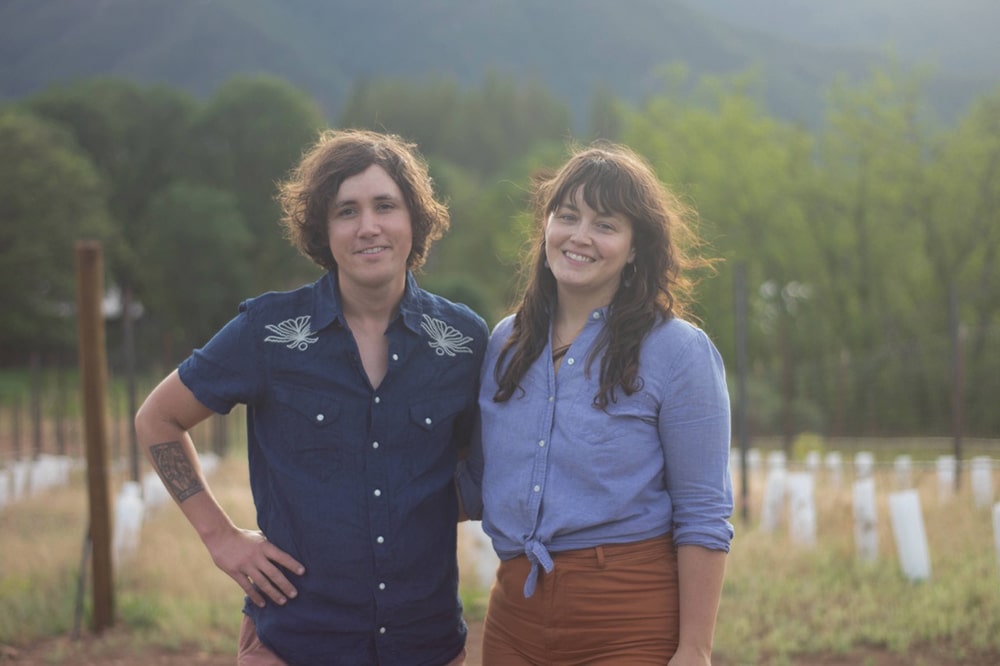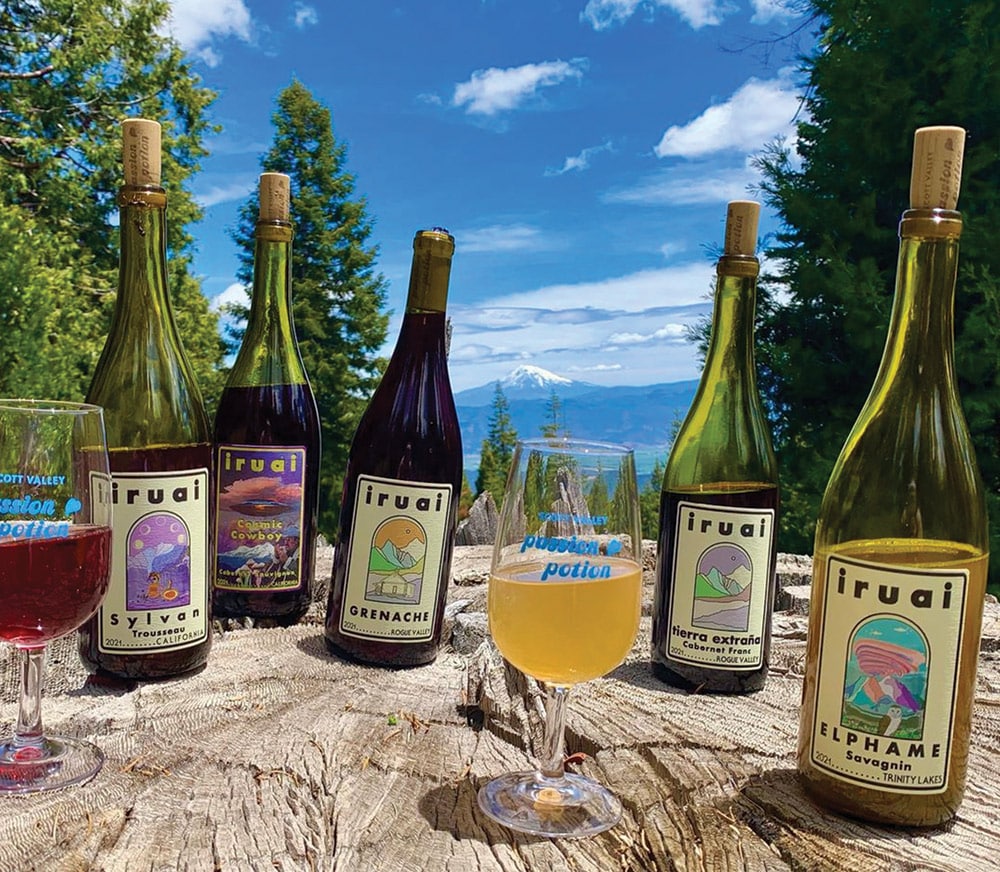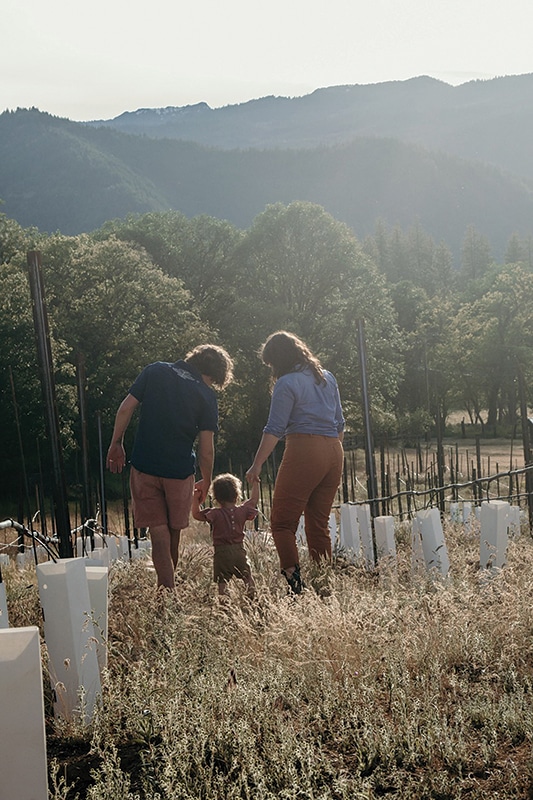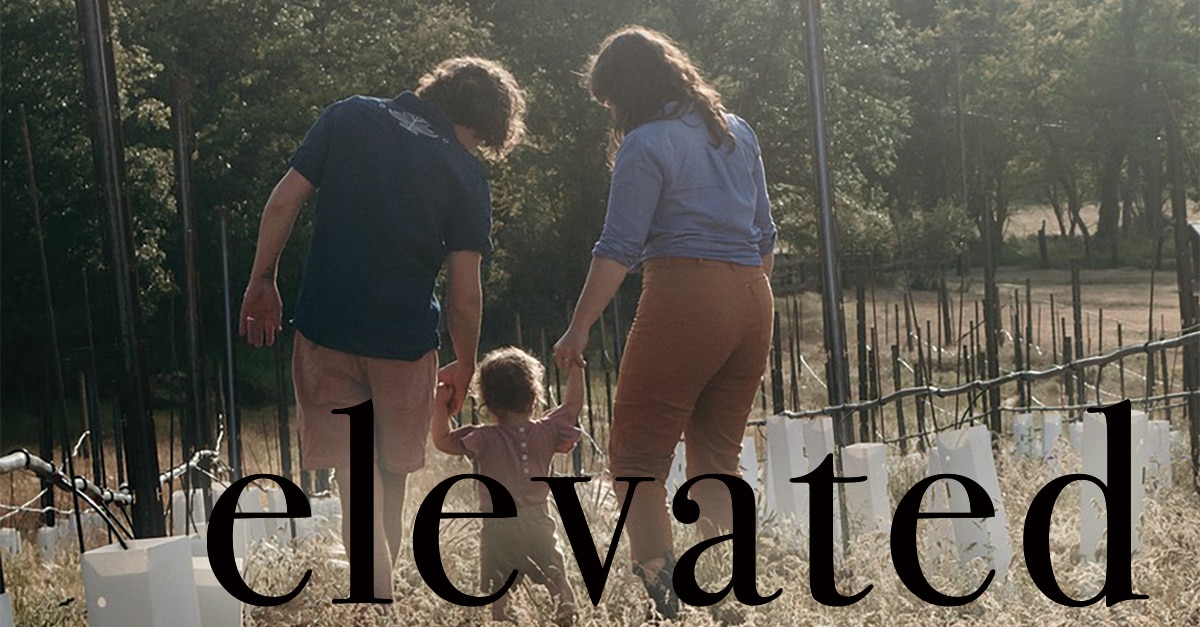Elevated
Iruai Winery in Scott Valley…
“Bacchus Amat Colles,” goes the Latin saying. Or, to put it in English: “Bacchus loves the hills.” Undoubtedly the Roman god of wine knew a thing or two about high-elevation grapes in the Alps, which are historically regarded as being smaller in size, possessing more flavor and color, and having a tougher skin. Now, winemaker Chad Westbrook Hinds and his wife and partner, Michelle Westbrook Hinds, are creating alpine- styled wines at their recently founded Iruai Winery in Scott Valley that sits at about 2,700 feet above sea level.

“We are definitely one of the highest-elevation vineyards in California,” explains Michelle. Chad adds, “Whichever part of the Alps you’re in, you can find all sorts of different types of wines, but the main thing is that you have a shorter window for which to get the grape ripe. So, like in Scott Valley, the winters and springs are much cooler and fall comes on earlier. I tend to think this makes the character of the grape much more interesting. In general, you get a fruit expression bookended by lots of natural acidity that imparts savory qualities and more earthiness.”

Michelle’s roots in Scott Valley go back more than 150 years. “My family’s been here off and on since the Gold Rush. I moved away for college and then I met Chad.” In Berkeley, Chad had already been experimenting with urban wineries, as well as his own acclaimed label Methode Sauvage. But in Scott Valley, the couple decided to roll the dice on a whole new experiment. “I’d say after years of getting entrenched in that world of trying to find more fun and unusual grapes to work with, it became really exciting to have the prospect of finding a place where it’s actually approachable to purchase land and do farming ourselves. That gives us the freedom to work with varieties that aren’t typically represented in California at large.” Michelle adds, “Scott Valley is also a place we have always come to recharge, and when we realized we could make it work to live here, we were excited for the opportunity to bring something we love to a place we love.”

Loving the place also means exploring a deeper environmental vision. “I don’t know if Chad would call himself this, but he is kind of a natural pioneer. He likes to do things for himself and try new things,” explains Michelle. Chad agrees, proud of the permaculture methods and organic processes they are trying to employ in the production of their wines. And, by not trying to remove character or use additives, Chad tries to give the wines a strong sense of place. “I would hope that the giant red wines would express an air of the wild that you wouldn’t necessarily see in the Willamette Valley, where everything’s very cultivated and if you fly over it, you just see patchworks. Whereas hopefully if you fly over where we’re trying to plant, you see forests and us just hanging out on the edges.” At the vineyard, it’s easy to see this vision up close. “We’re doing our best to use a diversity of cover crops to hopefully help the grapes grow in ways that require less management and manipulation. And then you look beyond the vineyards and see the Marble Mountains.”

But when it comes to what many connoisseurs call “terroir,” Chad believes there’s more than just the land in Scott Valley that’s adding character to his wine. “When people talk about terroir, you often think of soil and climate, but there’s also a social aspect to consider. Hanging out with a lot of people who raise cattle or sitting outside by a fire makes me want to also have some wines with a darker fruit expression and more tannin structure. So, recently we’ve been making a lot deeper and darker red wines than we used to make hanging out in restaurants and wine bars.”
An “air of the wild” also truly encapsulates the fermenting process. “We make natural wine, as opposed to what they teach you in wine- making school. Which is, basically, you get grapes, you kill off any ambient yeast with sulfur. Then you temperature control them, wait for the right moment to add artificial yeast, add nutrients and enzymes. We go in the complete opposite direction and let the yeast that is already on the grapes do all the work. We are basically just shepherding the process along, trying to make sure nothing goes too awry. We also do some unusual things as well, like whole cluster fermentation where stems are included in the ferments, and fermenting white wine grapes on their skins, also called orange wine,” Chad says.

For someone buying their first bottle of Iruai, Chad notes they have a variety of fuller-bodied reds, some whites and rosés for specific tastes, but he recommends starting with the aptly named Shasta-Cascade. “It’s a blend with all sorts of fun Alpine things in it, but there’s also Pinot Noir, and I feel like anybody can get on board with a pretty easy drinking, medium bodied red wine.”•
Iruai Winery • www.iruaiwine.com Open by appointment only




